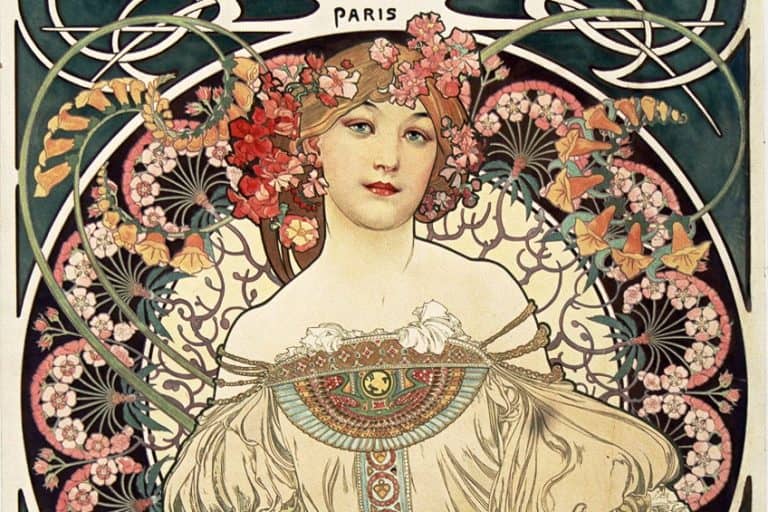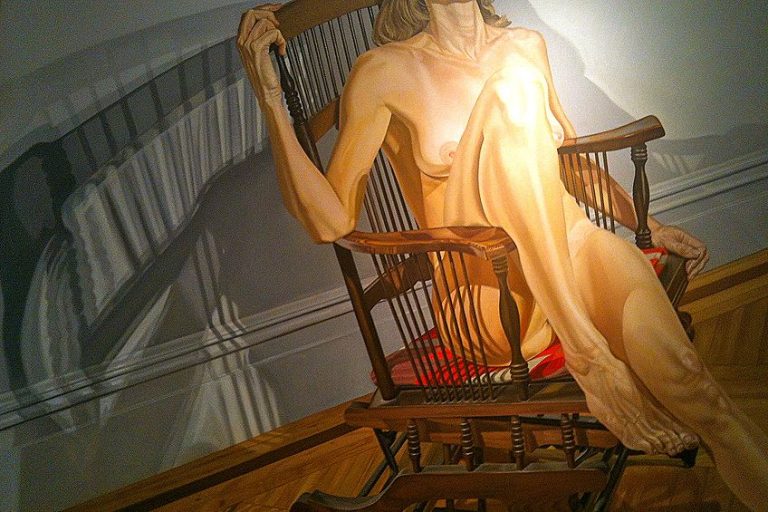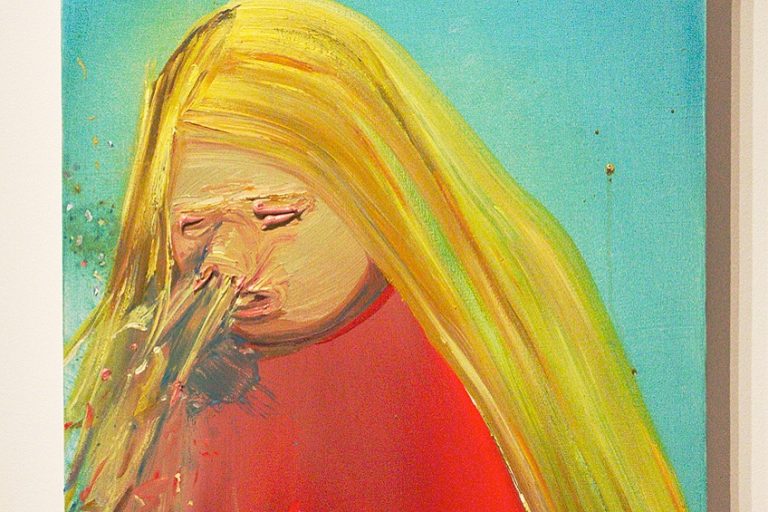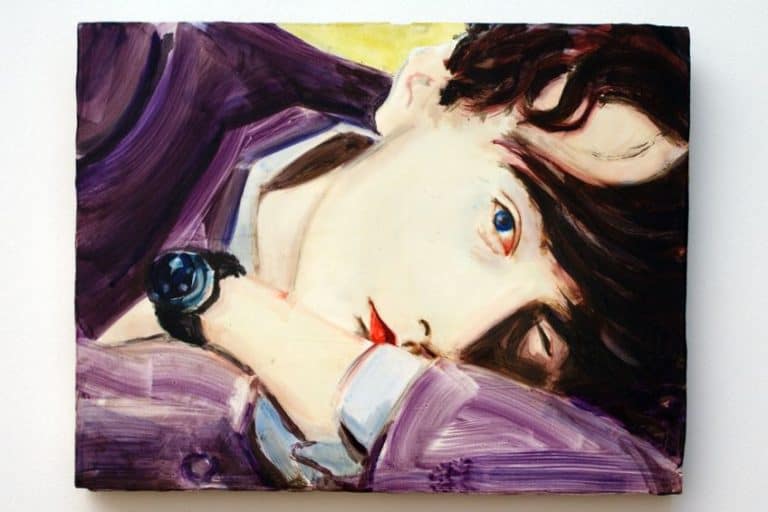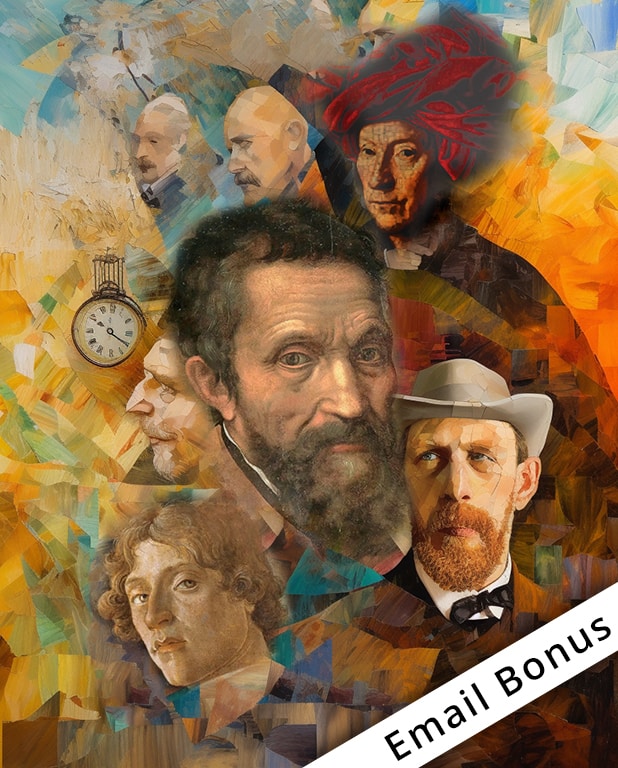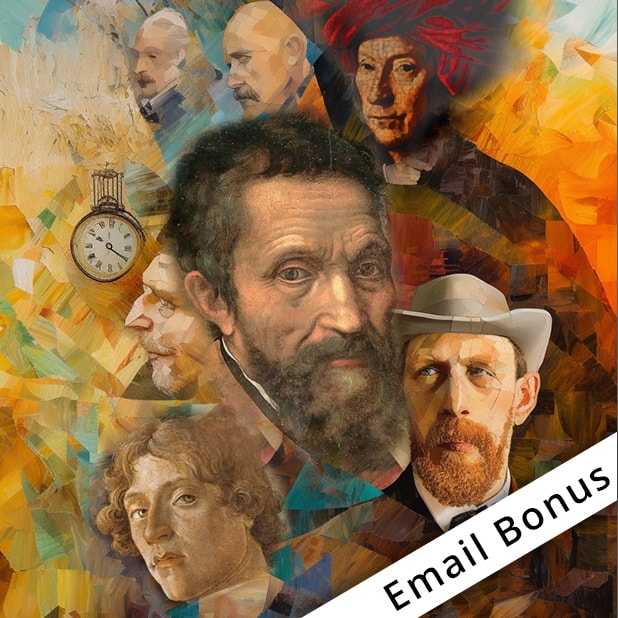Matthias Grünewald – A Key Figure in the German Renaissance
Matthias Grünewald, a pivotal figure of the German Renaissance, remains one of the most enigmatic and compelling artists of his era. Active during the late 15th and early 16th centuries, Grünewald is best known for his deeply emotive religious paintings that contrast starkly with the more serene and idealized works of his contemporaries. His most famous work, the Isenheim Altarpiece, is celebrated for its dramatic intensity, vivid coloration, and powerful depiction of human suffering and divine redemption. Though few of his works survive, Grünewald’s artistry continues to captivate and inspire, offering a profound glimpse into the spiritual and artistic currents of his time.
Key Takeaways
- Matthias Grünewald chose medieval styles over Renaissance classicism.
- His work is known for its vivid color and emotional depth.
- The Isenheim Altarpiece is his most recognized masterpiece.
Life and Identity of Matthias Grünewald
| Birth | c. 1470 |
| Death | August 31, 1528 |
| Place of Birth | Würzburg, Germany |
| Genre of Work | German Renaissance, Religious art, and altarpieces |
Matthias Grünewald stands out as one of the most compelling figures of the German Renaissance era. Born around 1470 and passing in 1528, he created some of the most intense and expressive religious artwork of his time. Grünewald’s work is marked by his vivid use of color and agitated lines, which convey deep emotion and spirituality.

Despite living during a time when Renaissance classicism was dominant, Grünewald chose to follow the older, medieval style. This decision sets his work apart from many of his contemporaries. Grünewald’s life remains somewhat of a mystery, with few concrete details about his early years or training. He is first noted in historical records around 1505. Known also as Mathis, he often focused on religious subjects, creating pieces that were both powerful and haunting in their detail.
The most famous of these is the Isenheim Altarpiece, a masterpiece housed in the Antonite monastery at Isenheim, which demonstrates his skill and unique approach to religious storytelling.
Early Years and Personal Background
Matthias Grünewald was born around 1470, likely in Würzburg, Germany. Details about his early life are scarce, with most information derived from his later works and historical records. He was active during the early 16th century, a time of great change and artistic evolution in Central Europe. His work contrasted markedly with the classical ideals of the Renaissance, continuing the intense and expressive style of late medieval art. Grünewald’s most famous work is the Isenheim Altarpiece, created for the monastery of St. Anthony in Isenheim. This piece is renowned for its vivid colors and dramatic, almost surreal, depiction of religious scenes.

Alias and Real Name Debate
The name “Matthias Grünewald” itself is a topic of historical debate. Contemporary accounts suggest his real name was Mathis Gothardt Neithardt, though records also show variations like Mathis and Nithart. The name “Grünewald” was popularized by Joachim von Sandrart, a 17th-century artist and writer who mistakenly attributed it to him. This misidentification has persisted, contributing to the confusion about his true identity. While the exact reasons for his multiple names remain unclear, it adds a layer of intrigue to his already enigmatic legacy.
Despite these uncertainties, his contribution to art and his distinctive style remain undisputed.
Artistic Style and Influences
Matthias Grünewald’s art is known for its intense emotion and bold use of color. He followed the spiritual and mystical style of late medieval European art, creating a unique artistic identity.

Comparison With Contemporaries
Grünewald’s work stood out from his contemporaries due to his rejection of Renaissance classicism. Unlike Albrecht Dürer, who embraced Renaissance ideals, Grünewald continued the traditions of Gothic art. His paintings often featured expressive figures and dramatic compositions. This dramatic style can be seen in his famous Isenheim Altarpiece, marked by vivid colors and intense emotional themes. In contrast, Dürer focused on symmetry, proportion, and idealized beauty, reflecting the influence of Italian Renaissance.
Grünewald’s choice to maintain a medieval style set him apart, giving his work a distinctive flare of Northern European art.
Development of Artistic Style
Grünewald’s style developed through his dedication to religious themes and alternative art traditions. He was influenced by earlier Gothic traditions rather than the more classical approaches of the Renaissance. His works often featured agitated lines and intense color to convey spiritual and mystical experiences. This was a contrast to the calmness and balance seen in contemporary works influenced by Renaissance principles. The Isenheim Altarpiece is a prime example of his style, with its emotive power and complex iconography. This piece, entrusted to Grünewald in 1515, showcases his skill in depicting suffering and redemption, themes central to his work. Grünewald’s persistence in these artistic avenues made him a key figure in the Northern European Renaissance.

Artistic Accomplishments
Matthias Grünewald is known for his intense and expressive religious paintings. His work stands out for its vivid colors and dramatic lines. Unlike many artists of his time, he did not follow the classical styles of the Renaissance. One of his most famous works is the Isenheim Altarpiece, completed around 1515. This piece is noted for its emotional intensity and graphic details of Christ’s suffering. The altarpiece features multiple panels that depict scenes from the Passion of Christ, Saint Anthony, and other religious subjects. Grünewald’s ability to convey pain and suffering is evident in his distorted and tormented figures. He vividly depicted scenes of Christ’s crucifixion, bringing a raw emotional power to his paintings.
His work was often described as “revolting” due to its brutal honesty, yet it remains deeply moving and spiritually profound. In his art, Grünewald frequently used bright, intense colors and agitated lines. This gave his paintings a visionary quality, setting them apart from other works of his time.
Grünewald was also known for his skill in creating altarpieces. These large, complex works required a high level of craftsmanship and attention to detail. His altarpieces often included intricate woodcarvings and were designed to accompany religious ceremonies. Despite his significant contributions to art, much about Grünewald’s life remains a mystery. He did not leave behind extensive records, and his style did not widely influence his contemporaries. Yet, his unique approach to religious themes secured his place as one of the great painters of his era.
Major Works and Achievements
Matthias Grünewald’s major works include his masterful altarpieces and expressive religious paintings. His style is marked by intense color and dynamic compositions.

Isenheim Altarpiece
The Isenheim Altarpiece is Grünewald’s most famous work. It was created for the Monastery of St. Anthony in Isenheim around 1515. The altarpiece is noted for its vivid and emotional depictions of biblical scenes. It has multiple panels that can be opened to reveal different sections. Key scenes include the Crucifixion, Resurrection, and The Annunciation. The piece was designed to provide comfort to patients suffering from skin diseases, as St. Anthony’s monastery was a hospital.
The intense imagery provided spiritual solace and served a therapeutic purpose.
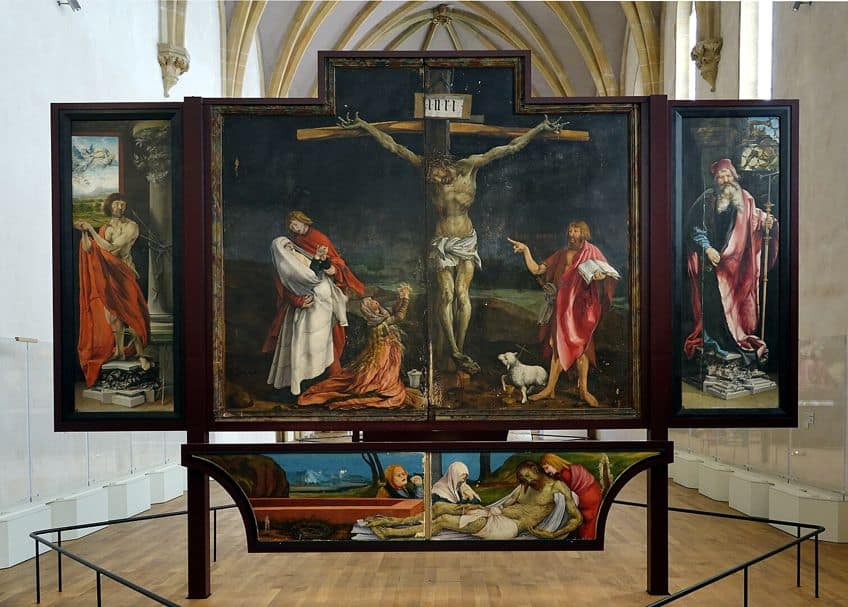
Temptation of St. Anthony
Another significant work is the Temptation of St. Anthony, which is also part of the Isenheim Altarpiece. This panel depicts the torments St. Anthony faced from demons. Grünewald’s portrayal is both surreal and dramatic. The chaotic scene highlights his skill in capturing intense emotion and movement. The twisted, monstrous figures offer a stark contrast to the calm and steadfast figure of St. Anthony.
This painting strongly demonstrates Grünewald’s ability to blend horror and beauty, making it one of the most compelling pieces of religious art.

Other Notable Works
Apart from the Isenheim Altarpiece, Grünewald created other important works, though fewer of these have survived. The Tauberbischofsheim Altarpiece and Stuppach Madonna are notable examples. The Meeting of SS. Erasmus and Maurice is another significant painting, showing a blend of intricate detail and rich coloration. Grünewald’s ability to convey the spiritual and emotional gravity of his subjects is evident in all these works.
His unique style and visionary approach to religious painting left a lasting impact on Northern Renaissance art.
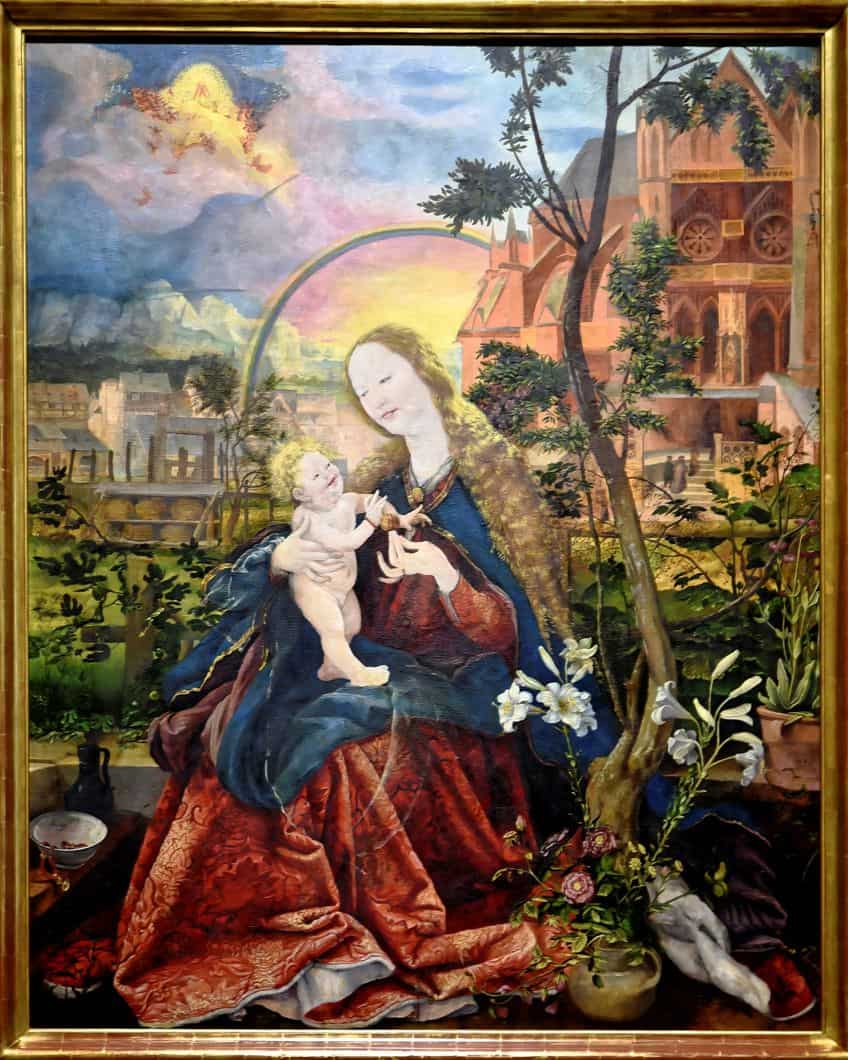
Cultural and Historical Impact
Matthias Grünewald’s work, deeply rooted in the German Renaissance, holds significant cultural and historical importance due to its intense religious themes and lasting influence on art. Matthias Grünewald’s paintings are celebrated for their profound religious themes. His art often depicts spiritual mysteries with a vivid, expressive style. Unlike many of his contemporaries, Grünewald chose to stay away from the rising Renaissance classicism. Instead, he embraced the mystical and religious art style of late medieval Europe. Grünewald’s works resonated with many during his time because of their intense emotional impact. His ability to convey human suffering, hope, and redemption had a deep cultural significance, making his art a source of spiritual solace, especially in periods of turmoil.
His association with influential religious figures, such as the archbishop of Mainz, underscores his prominence in the cultural landscape.
Legacy in Art History
In art history, Matthias Grünewald is revered for his painterly achievements and his unique style. Figures like Joachim von Sandrart later wrote about his impact on the art world. Grünewald’s works are characterized by their expressive hands and vivid colors, which set him apart from his peers. His ability to capture melancholy and spiritual fervor influenced many artists who came after him. Grünewald’s reluctance to embrace the new Protestant cause and involvement with Lutheran pamphlets further highlight his complex relationship with the changing tides of his time. His distinctive approach has left a lasting legacy in art history, solidifying his place as a master of conveying deep, spiritual experiences through paint.

Matthias Grünewald’s legacy endures as a testament to the transformative power of art in expressing the depths of human emotion and spirituality. His ability to convey intense suffering and divine transcendence in works like the Isenheim Altarpiece sets him apart as a master of emotive religious imagery. Despite the limited number of surviving works, Grünewald’s unique vision and profound impact on the Northern Renaissance continue to resonate, underscoring his significance in the annals of art history. His paintings not only reflect the spiritual turbulence of his time but also invite contemporary audiences to engage with the universal themes of pain, hope, and redemption.
Frequently Asked Questions
How Has Matthias Grünewald’s Art Style Contributed to the Northern Renaissance?
Matthias Grünewald played a crucial role in shaping the Northern Renaissance. His use of intense colors and dramatic contrasts set his work apart. Grünewald’s ability to evoke strong emotions through his art contributed to the movement by highlighting the power of religious themes in vivid detail.
What Themes Are Predominantly Depicted in Grünewald’s Paintings?
Grünewald focused primarily on religious themes. His most famous work, the Isenheim Altarpiece, illustrates scenes from the New Testament, such as the Crucifixion and the Resurrection. His paintings often depict suffering, redemption, and divine intervention, using powerful imagery to convey these themes.
How Did Matthias Grünewald’s Personal Life Influence His Artistic Work?
Little is known about Grünewald’s personal life, but it is believed that his deep religious faith profoundly impacted his work. The intensity and emotion in his paintings suggest a close connection to the spiritual themes he explored. His commissions for churches and religious institutions show his commitment to depicting religious narratives with sincerity and depth.
What Were the Artistic Innovations Introduced by Grünewald During His Career?
Grünewald introduced several artistic innovations, including the use of vibrant, contrasting colors and exaggerated facial expressions to convey deep emotion. His technique of blending medieval and Renaissance elements created a unique style that distinguished his work from his contemporaries. His ability to merge intense realism with visionary elements marked a significant advancement in religious art.
Isabella studied at the University of Cape Town in South Africa and graduated with a Bachelor of Arts majoring in English Literature & Language and Psychology. Throughout her undergraduate years, she took Art History as an additional subject and absolutely loved it. Building on from her art history knowledge that began in high school, art has always been a particular area of fascination for her. From learning about artworks previously unknown to her, or sharpening her existing understanding of specific works, the ability to continue learning within this interesting sphere excites her greatly.
Her focal points of interest in art history encompass profiling specific artists and art movements, as it is these areas where she is able to really dig deep into the rich narrative of the art world. Additionally, she particularly enjoys exploring the different artistic styles of the 20th century, as well as the important impact that female artists have had on the development of art history.
Learn more about Isabella Meyer and the Art in Context Team.
Cite this Article
Isabella, Meyer, “Matthias Grünewald – A Key Figure in the German Renaissance.” Art in Context. June 24, 2024. URL: https://artincontext.org/matthias-grunewald/
Meyer, I. (2024, 24 June). Matthias Grünewald – A Key Figure in the German Renaissance. Art in Context. https://artincontext.org/matthias-grunewald/
Meyer, Isabella. “Matthias Grünewald – A Key Figure in the German Renaissance.” Art in Context, June 24, 2024. https://artincontext.org/matthias-grunewald/.




